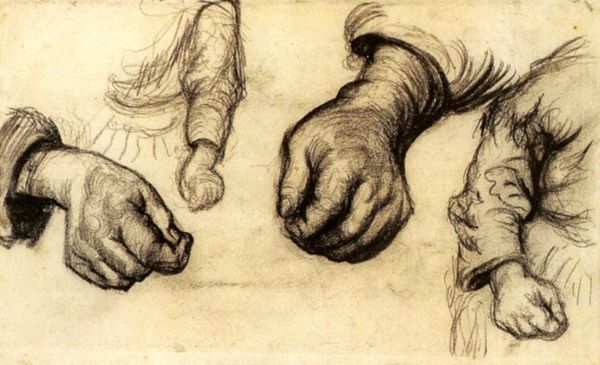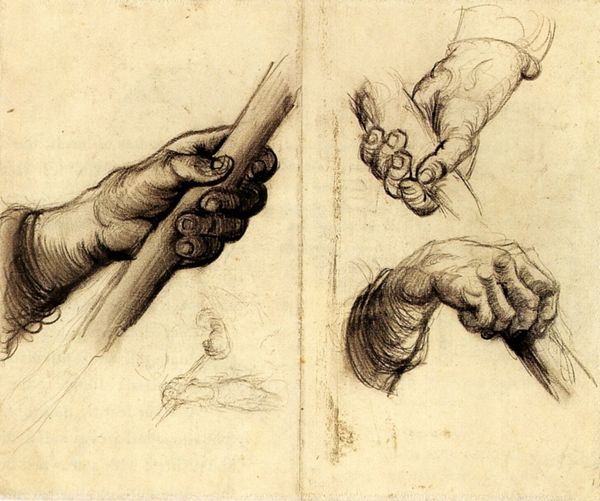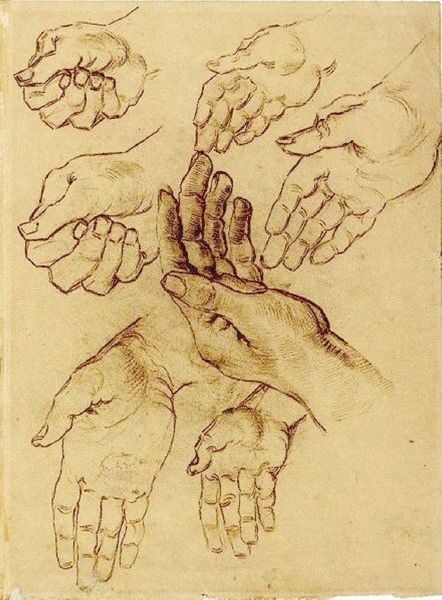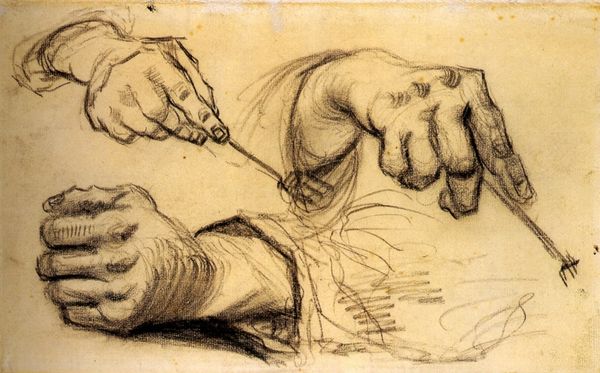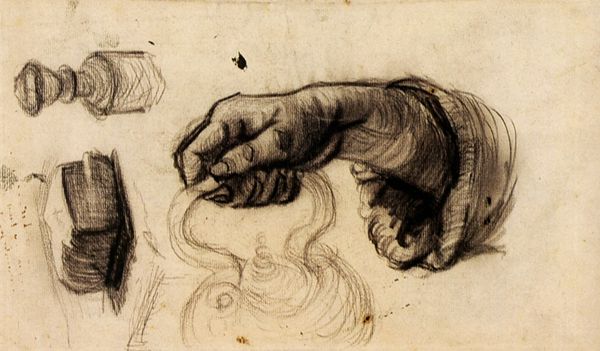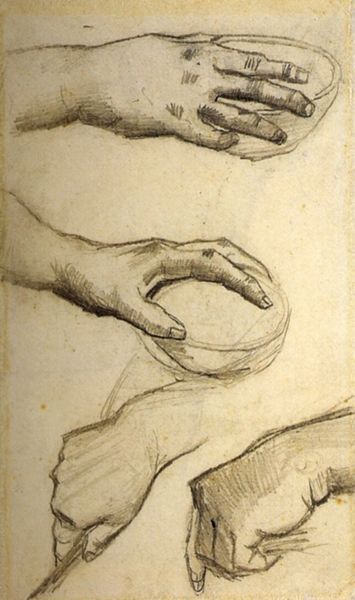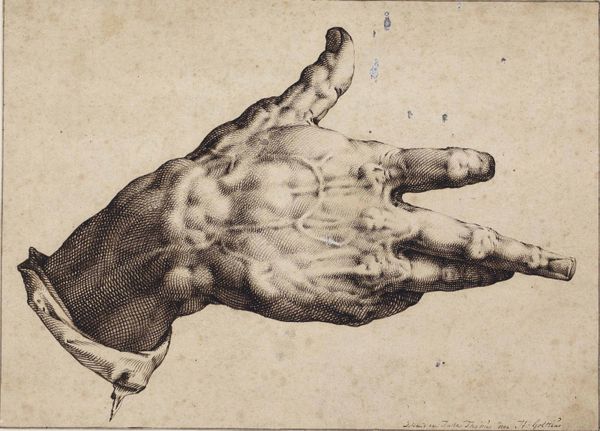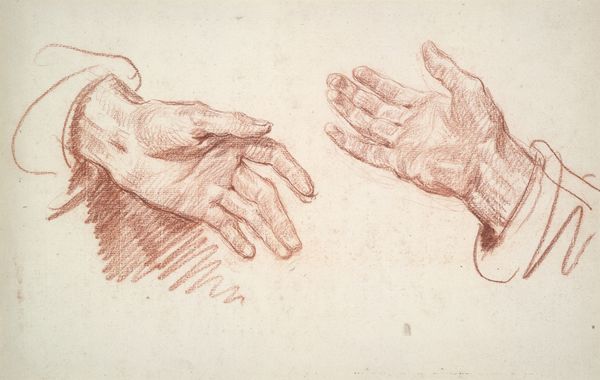
drawing, paper, ink
#
portrait
#
drawing
#
figuration
#
paper
#
11_renaissance
#
ink
#
sketch
#
portrait drawing
#
northern-renaissance
#
academic-art
Copyright: Public domain
Curator: So, this is Albrecht Dürer's "Study of Three Hands," created in 1494. It's an ink drawing on paper and is currently housed at the Albertina in Vienna. What strikes you first? Editor: Well, the vulnerability, almost. They’re just hands, yet they feel so… present. Raw and intimate. The artist gives us insight into this detailed exploration of a particular moment. Curator: Indeed, it is incredible. These aren't idealized hands; you can almost feel the bones and veins beneath the skin. They remind me of my grandfather’s hands. You know, gnarled with age and hard work. I love this kind of intimate portrayal of common people, ordinary life. Editor: Exactly. Hands are laden with symbols across cultures and through art history. The "hand of God", healing hands, raised hands to denote power... Dürer here presents the human hands as they are, perhaps tools or stand-ins for touch or labour, and asks us to think about it. But in doing that, he actually heightens their symbolic resonance. Curator: Good point! Each gesture does tell its own mini-story. I wonder what Dürer himself was trying to convey? Editor: Who knows, but looking at them this close, you feel their capacity for anything; they could be holding tools, maybe crafting or painting... Perhaps they are portraits. It feels, psychologically, like three facets of a single, skilled person, you know? This study reveals Dürer's exceptional skills. It really lets us appreciate the details with just ink on paper. Curator: Absolutely, like a peek into his creative process, right? So fascinating. Editor: Yes! The Renaissance was just gaining speed, with more and more ordinary folk gaining presence in artwork. These aren't just "hands"; they carry a quiet authority. Thanks for guiding us through it, it was delightful. Curator: My pleasure entirely, a great chance for exploration. Thanks!
Comments
No comments
Be the first to comment and join the conversation on the ultimate creative platform.
